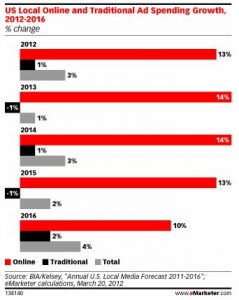Every customer you have ever landed came through a purchase path. Some of the paths are clear-cut, such as getting customers from your website, TV ad, driving by your store, or the customer’s smartphone. Others aren’t as clear. For example, someone might see your TV ad, go search for you online, then come to your store. Some might see your ad on Facebook, go to your website and fill out a form for more information, and wait to be contacted by a salesperson.
The point is, you might have an idea of how purchase paths are laid out, but the truth is they are usually more convoluted than they seem at first.
Because of this convolution, you have to be prepared to remarket your products or services to your customers in many different ways. It’s not enough to do some local TV ads and have a website, you need to be actively targeting and communicating with your customers in order to get them to convert.
There are several ways you can make sure that you are targeting your customers in the right way. The first of which is search engine marketing (SEM). SEM is important because it places your ads at the top of the search results for the keywords you’ve selected, giving you the ability to reach more customers.
Another reason this is important is because your customers may not remember exactly what your business is called, but they just know what type of product you provide. For example, if they heard your radio ad, or saw your business and couldn’t remember what the name was, but could only remember that you sold heaters and air conditioning, they could type “heating and air conditioning Seattle” (or whatever their city was) and your ad would pop up at the top.
A second way you can help promote across purchase paths is through retargeting. Retargeting places a cookie in the user’s web browser when they visit your site, this causes your display ads to be displayed to them after they leave. This brings increased mindshare and brand awareness during the customer’s shopping cycle, which will result in more revenue.
A third way to promote your business across purchase paths is by using your social networks. Chances are, you have a Facebook page, and studies have shown that users who buy something from a business after going through its social channels spend more money per transaction. Leverage your social networks to get users to make purchases. Offer discounts to Facebook fans, or plan a giveaway on your fan page.
If you want to be able to promote your business in today’s changing digital landscape, check out our website for more information on what we do. We are a full-service Seattle ad agency specializing in the digital realm.
We can help you get more from the Internet.








